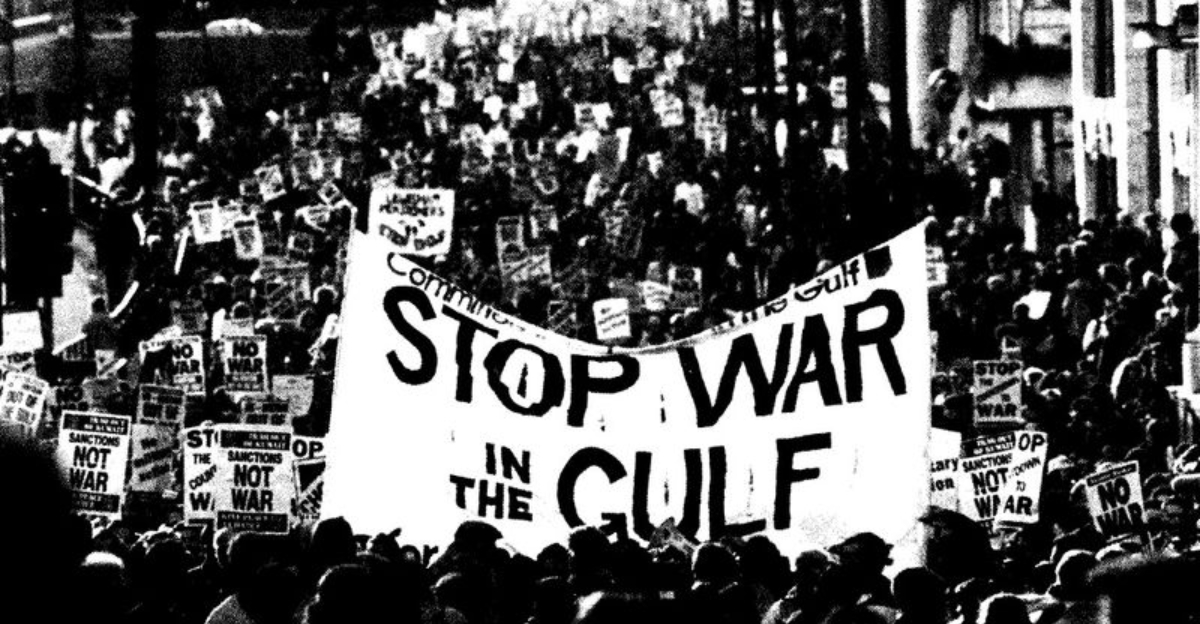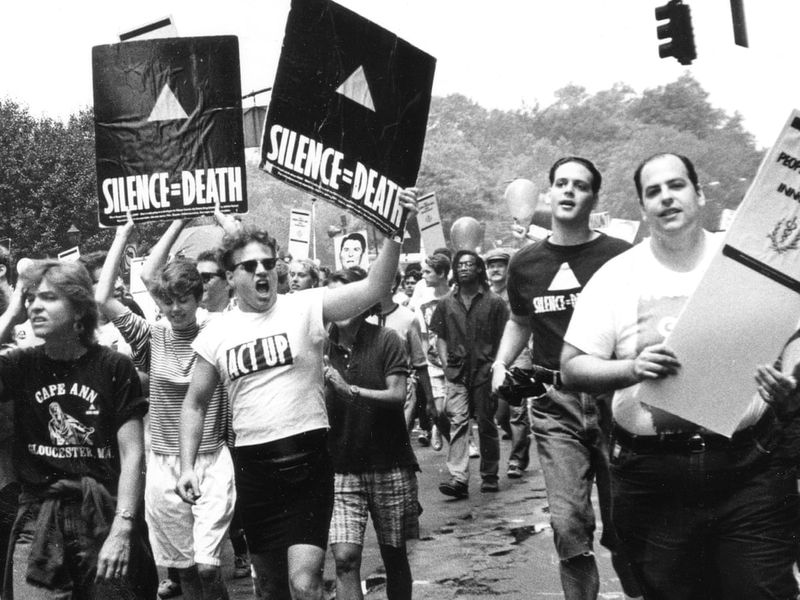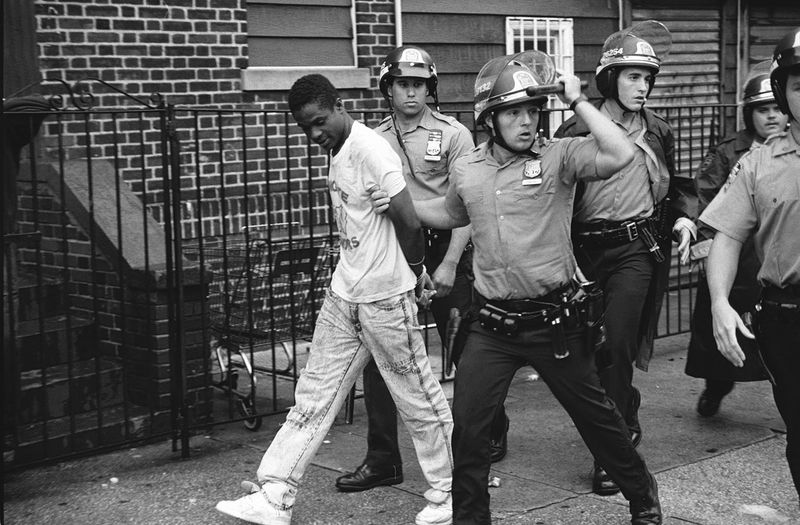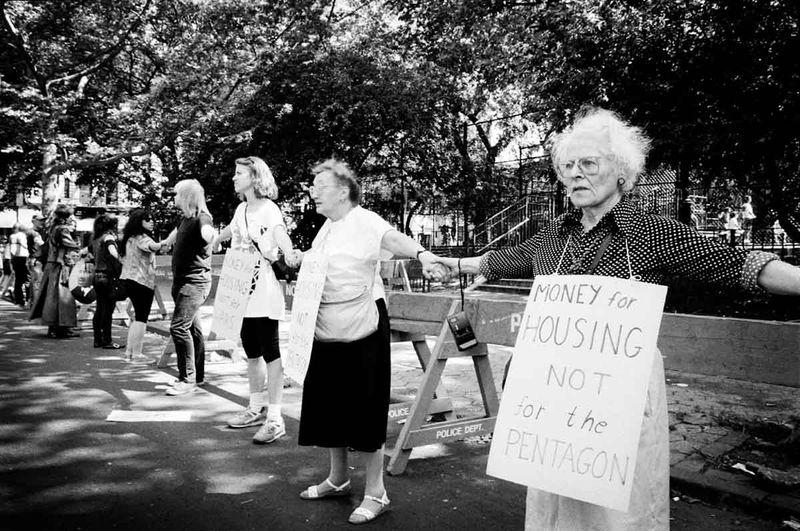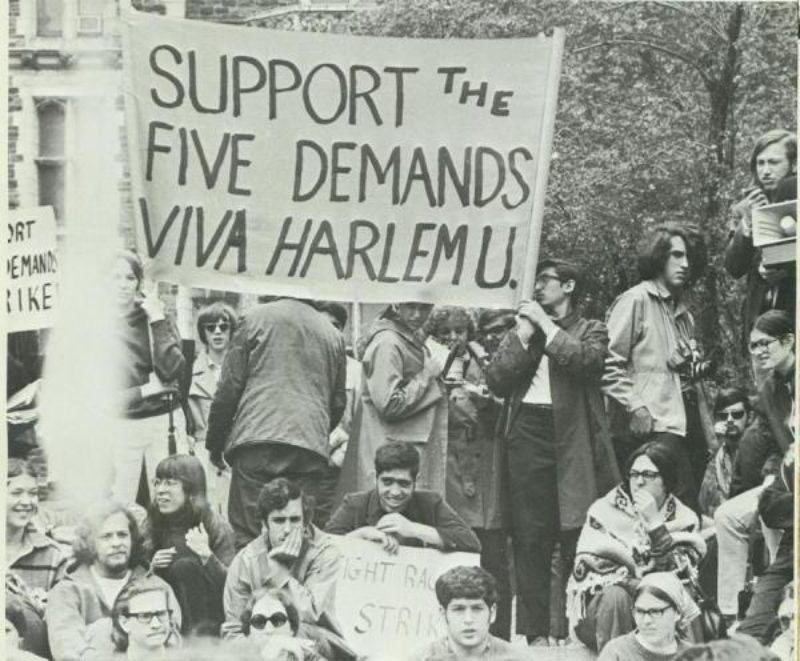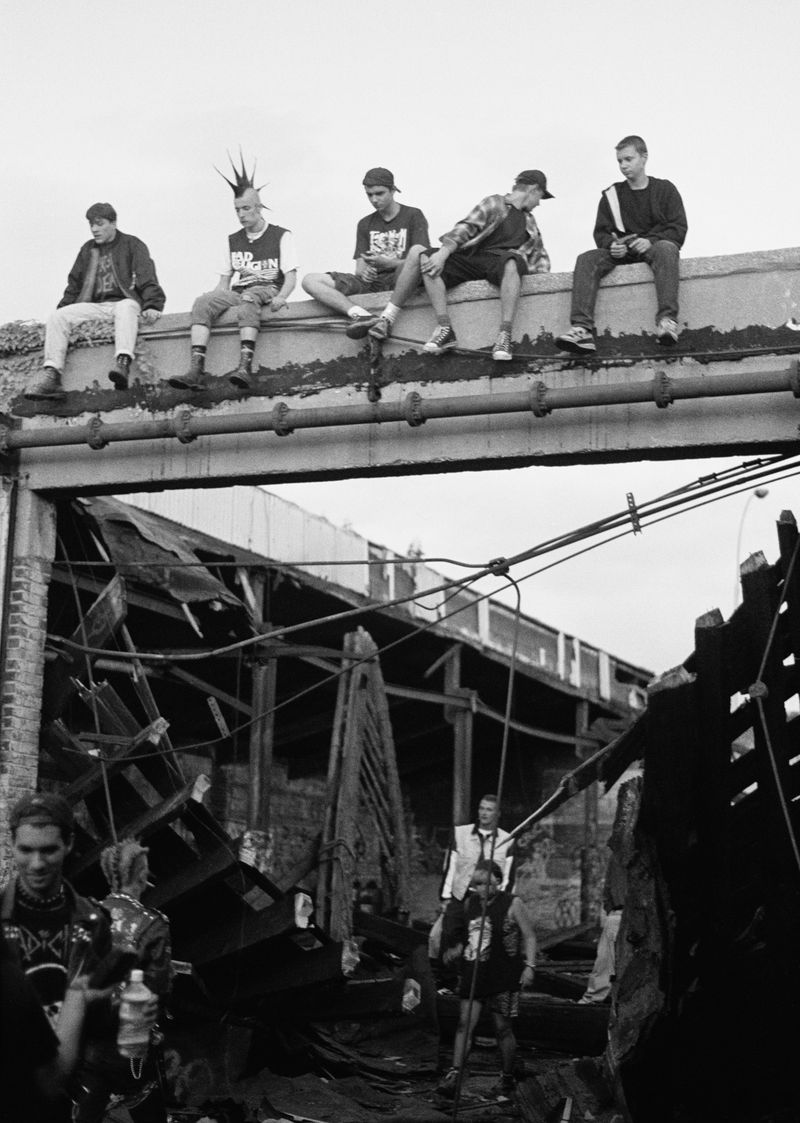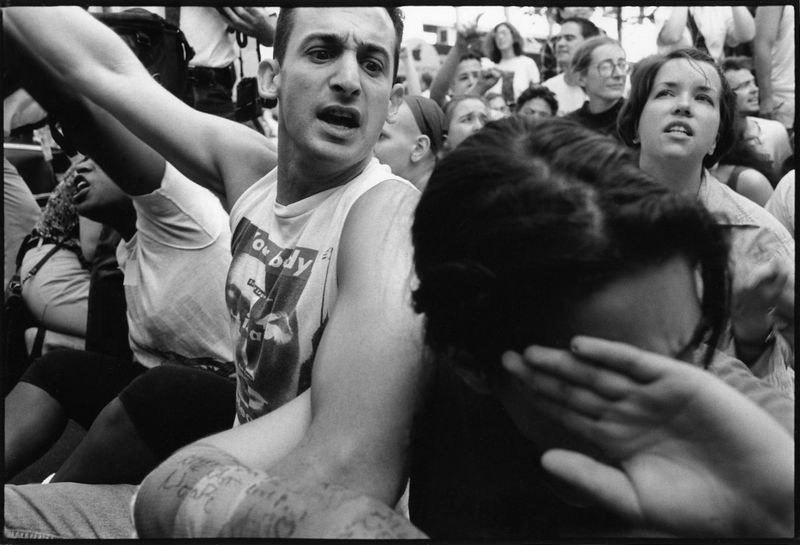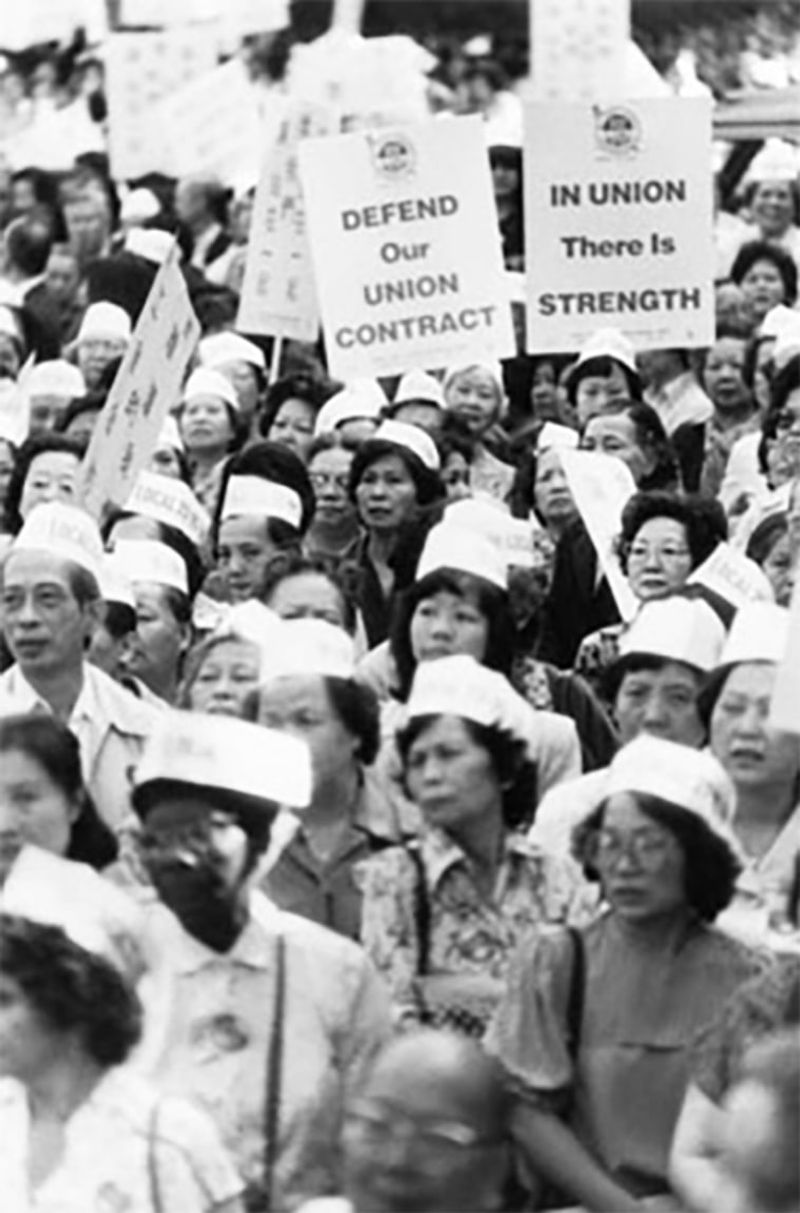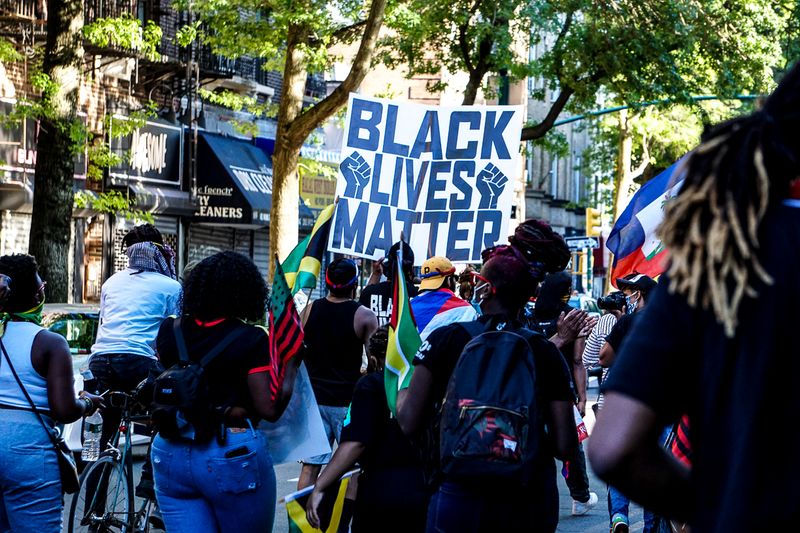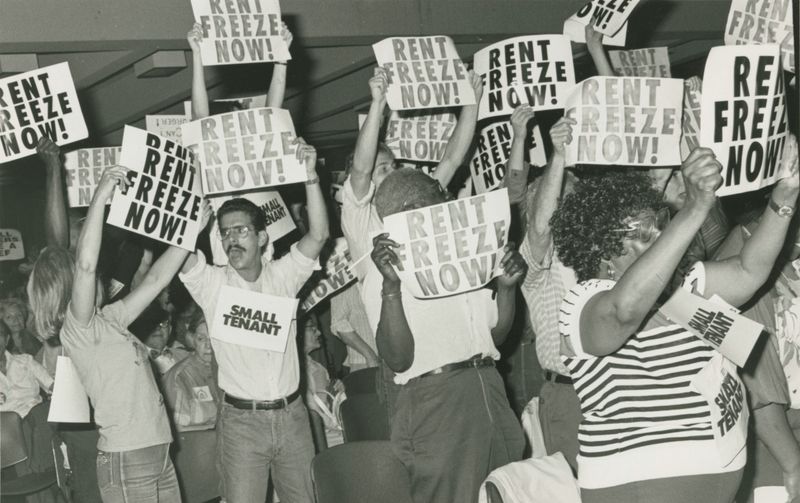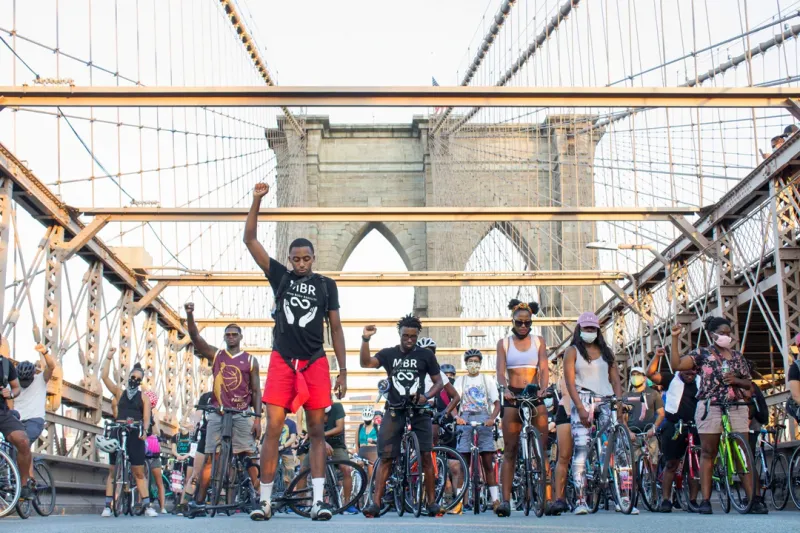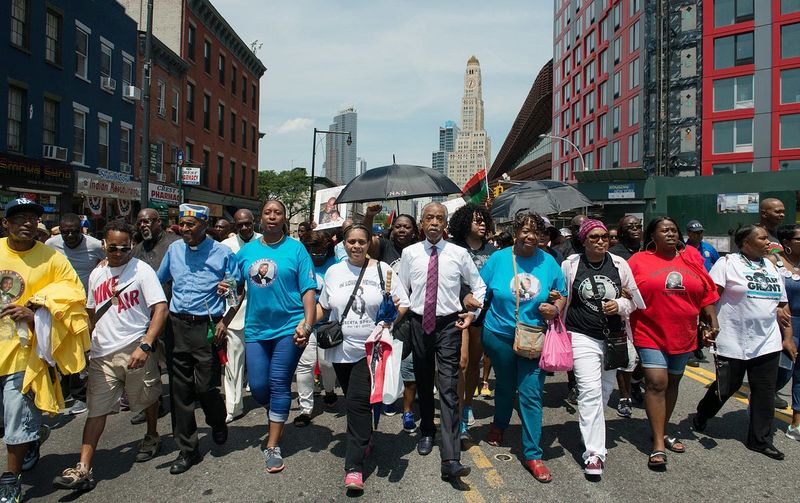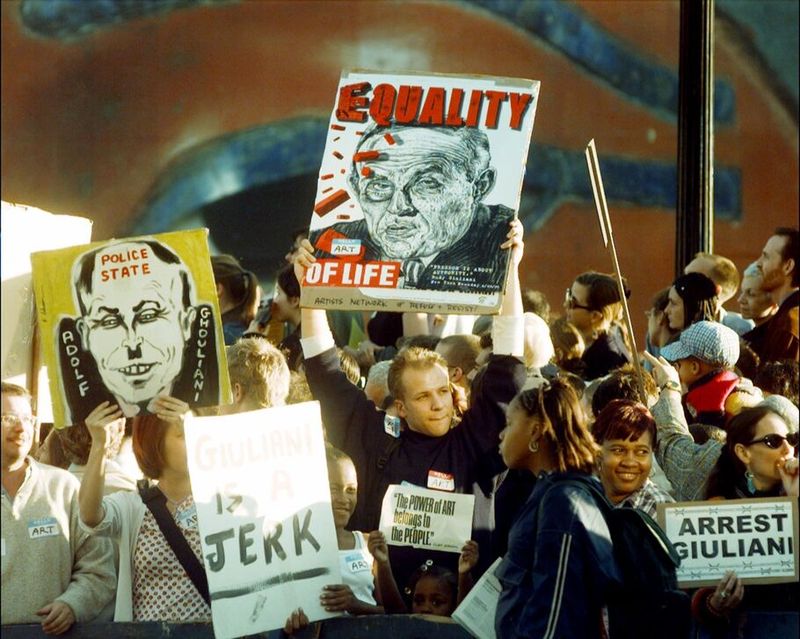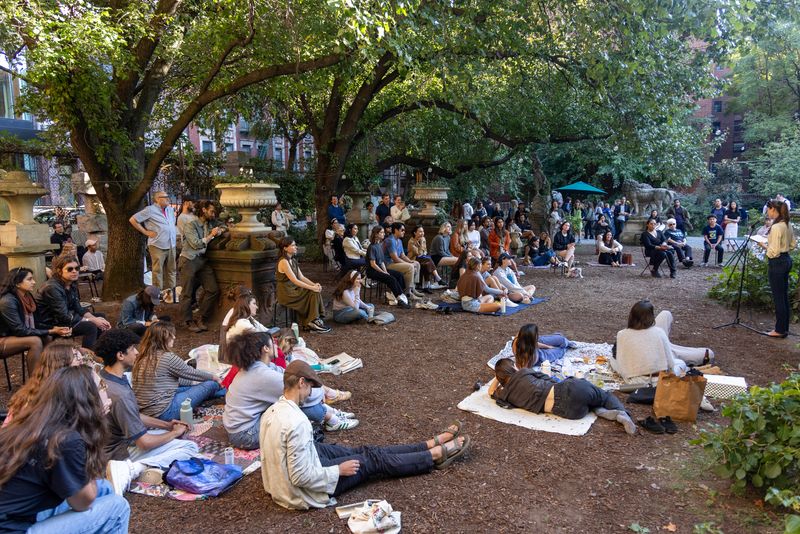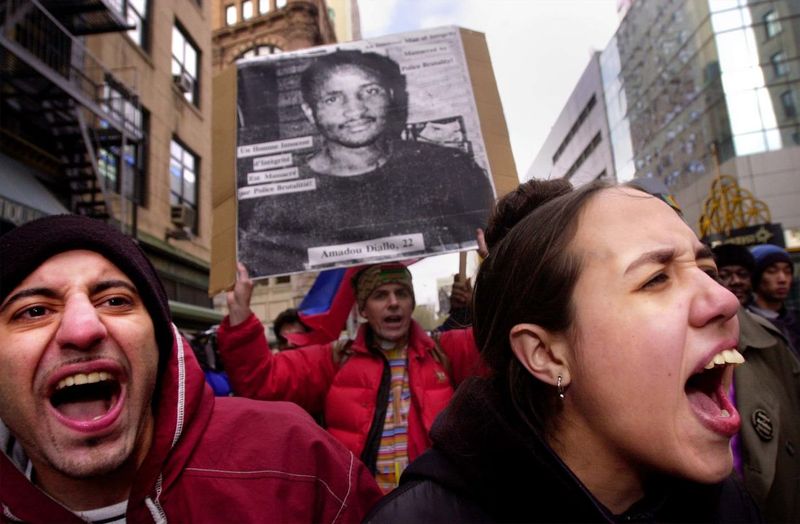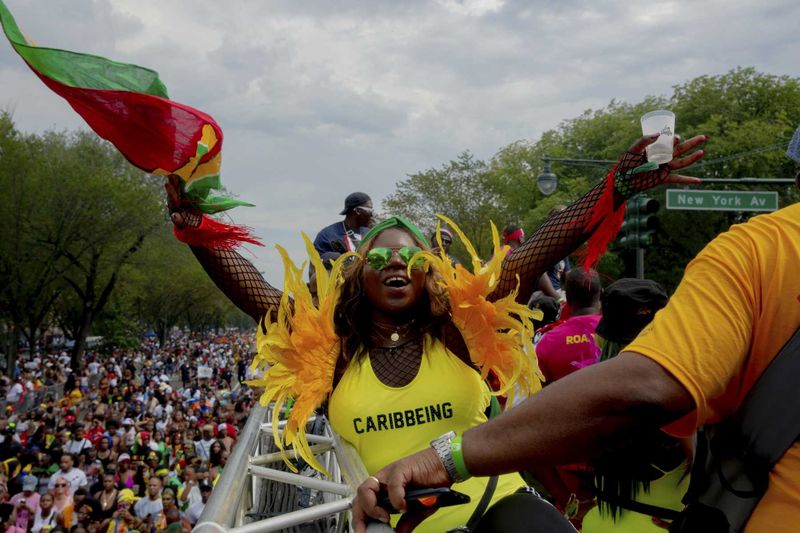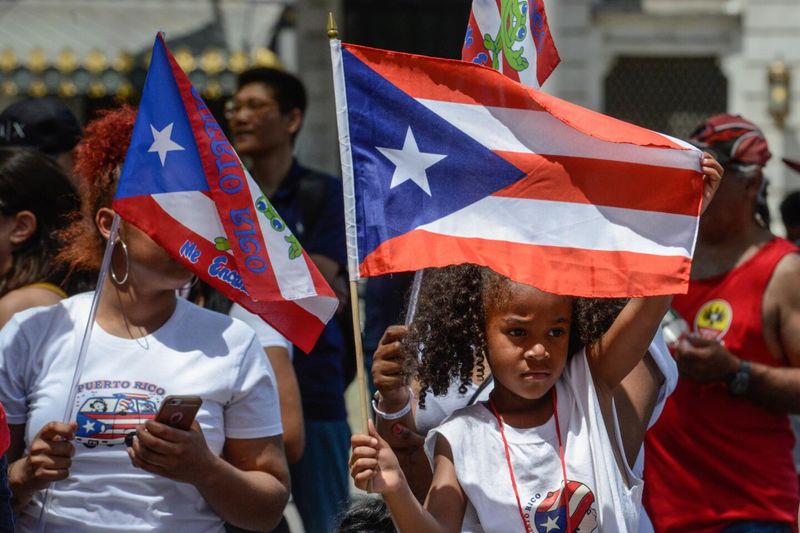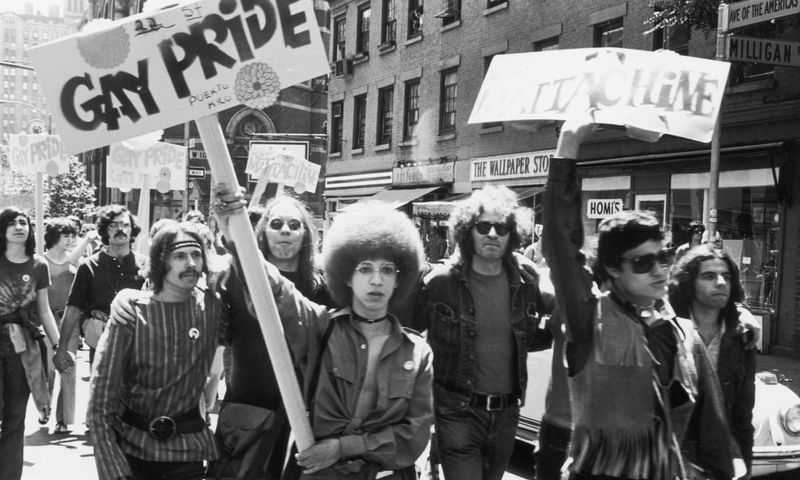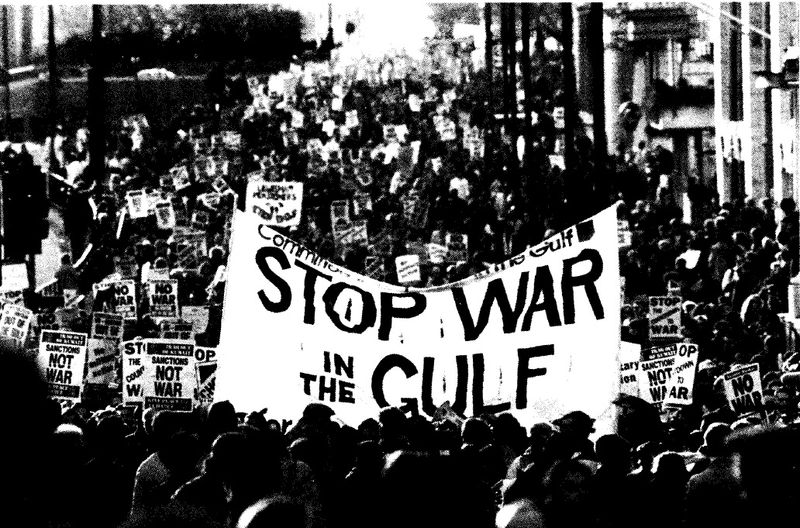New York City transformed into a battlefield for social justice between 1980 and 2000. Countless New Yorkers took to the streets, fighting for everything from AIDS awareness to housing rights, challenging authority and demanding change. These protests shaped the city’s identity and influenced national conversations on equality, civil rights, and government accountability.
1. AIDS Coalition to Unleash Power (ACT UP)
Desperate times called for desperate measures when ACT UP formed in 1987. Outraged by government inaction during the AIDS crisis, activists staged die-ins at places like Wall Street and St. Patrick’s Cathedral, their bodies symbolizing lives lost to political neglect.
Photographers captured protesters carrying signs with their iconic slogan “SILENCE = DEATH” against backdrops of police confrontations. The group pioneered direct action tactics that redefined protest culture in NYC.
Their demonstrations forced medical institutions to speed up drug approval processes and pushed AIDS awareness into mainstream consciousness when many preferred to look away.
2. Crown Heights Uprising of 1991
Tensions exploded in Brooklyn when a car in a Hasidic motorcade accidentally struck and killed 7-year-old Gavin Cato. Hours later, a Jewish student was fatally stabbed in apparent retaliation, igniting three days of violent clashes between Black and Jewish residents.
Street corners became flashpoints as angry crowds confronted police barricades. Photographers documented both the chaos and community leaders attempting to restore peace.
Mayor David Dinkins faced harsh criticism for his handling of the situation. The uprising exposed deep racial divisions in New York and raised questions about police response to civil unrest in different neighborhoods.
3. Tompkins Square Park Police Riot
Summer night tensions boiled over on August 6, 1988, when police attempted to enforce a 1 a.m. curfew in Tompkins Square Park. East Village residents, homeless people, and activists who considered the park their community space refused to leave.
Chaos erupted as officers removed their badges and name tags before charging into crowds with nightsticks. Photographer Clayton Patterson documented officers beating protesters, creating evidence that contradicted official accounts.
The confrontation symbolized larger battles over gentrification and public space. For many New Yorkers, the night represented a turning point in community resistance against heavy-handed policing and displacement.
4. Million Youth March Standoff
Harlem streets swelled with young African American protesters on September 5, 1998. Organized by controversial figure Khalid Muhammad, the march faced intense opposition from Mayor Rudolph Giuliani, who tried unsuccessfully to block it through legal channels.
Helicopter blades whirred overhead as police surrounded the gathering. When the permit’s time limit expired, officers moved in aggressively to disperse crowds, resulting in dozens of injuries.
Photojournalists captured the stark contrast between peaceful assembly and militarized response. The event highlighted ongoing tensions between law enforcement and communities of color during Giuliani’s administration.
5. Squatters’ Rights Movements
Abandoned buildings transformed into homes and community spaces as squatters reclaimed neglected properties throughout the 1980s. Lower East Side activists fixed roofs, installed plumbing, and created gardens in spaces the city had written off.
Confrontations intensified when market values rose and authorities sought to reclaim properties. Photographers documented dramatic eviction standoffs where residents barricaded themselves inside buildings they’d rehabilitated over years.
Beyond housing, the movement represented a radical vision of urban renewal centered on community needs rather than profit. Many squats eventually gained legal status through persistent organizing and legal advocacy.
6. Operation Rescue Anti-Abortion Blockades
Religious protesters formed human chains outside New York abortion clinics throughout the early 1990s. Operation Rescue activists blocked doorways, sang hymns, and confronted women seeking services in their controversial campaign against reproductive rights.
Counter-protesters developed clinic defense strategies, creating protective corridors for patients. The sidewalk battles attracted media attention as both sides attempted to control the narrative about women’s healthcare.
Photographers captured the emotional intensity of these confrontations, often focusing on the determined faces of clinic defenders. These images documented a pivotal chapter in the ongoing struggle over bodily autonomy and religious influence in public policy.
7. Chinese Staff and Workers Association Labor Protests
Garment workers marched through Chinatown carrying banners demanding fair wages and better conditions. Many employees faced brutal 12-hour days in sweatshops while owners violated minimum wage laws with impunity.
The Chinese Staff and Workers Association organized strikes that brought visibility to exploitation normally hidden behind factory doors. Photographers documented elderly seamstresses standing alongside young restaurant workers in rare public demonstrations.
Language barriers and immigration status had previously made organizing difficult, but solidarity grew throughout the 1990s. These protests challenged both exploitative employers and stereotypes about Asian American political passivity, creating a foundation for stronger labor rights in immigrant communities.
8. Police Brutality Protests After Abner Louima
Outrage erupted across Brooklyn in August 1997 when details emerged about Haitian immigrant Abner Louima’s brutal assault by NYPD officers. Thousands marched through Flatbush carrying handmade signs demanding justice and police accountability.
Caribbean community members led demonstrations that grew to include diverse New Yorkers united against police violence. Photographers captured Haitian flags waving alongside portraits of Louima as the case became a rallying point.
The protests forced a reckoning with systemic abuse in police precincts. While officer Justin Volpe eventually received a 30-year sentence, the movement highlighted how rare such prosecutions were despite widespread misconduct.
9. Housing Activists Against Gentrification
Rent-regulated apartments vanished at alarming rates throughout the 1990s as landlords exploited loopholes to convert affordable housing into luxury units. Tenant organizers responded by forming human chains to prevent evictions and staging demonstrations at housing court.
Community boards became battlegrounds where longtime residents confronted developers. Photographers documented emotional confrontations between elderly tenants and real estate representatives during heated public hearings.
Bilingual banners and chants reflected the multicultural coalition fighting displacement in neighborhoods like Washington Heights and the Lower East Side. These grassroots efforts established tenant protection precedents still referenced in today’s continuing housing struggles.
10. Critical Mass Bicycle Protests
Hundreds of cyclists reclaimed asphalt from automobiles during monthly Critical Mass rides starting in the mid-1990s. Without formal leadership, these spontaneous gatherings grew from environmental statement into confrontational challenge to car culture.
Riders blocked intersections by forming circles with their bicycles, creating temporary car-free zones. Photographers captured the carnival atmosphere as participants decorated bikes with signs and costumes to draw attention to their cause.
Tensions with police escalated as the movement grew, particularly during the 1999 rides. These rolling protests pioneered tactics later adopted by climate activists and laid groundwork for the eventual expansion of bicycle infrastructure throughout New York City.
11. Mothers Against Police Brutality
Women who lost children to police violence transformed personal grief into powerful activism throughout the 1980s and 1990s. These mothers carried enlarged photographs of their sons and daughters during marches to city hall and police headquarters.
Their testimonies at community forums provided firsthand accounts of how police misconduct devastated families. Photographers captured their dignified presence at protests, often focusing on the emotional weight carried in their expressions.
Organizations like Parents Against Police Brutality created support networks while demanding policy changes. Their persistent voices kept attention on cases that officials hoped would fade from public memory, creating an unbroken chain of accountability activism that continues today.
12. Anti-Giuliani Quality of Life Protests
Street performers, vendors, and everyday New Yorkers pushed back against Mayor Rudolph Giuliani’s aggressive policing of minor infractions. His “quality of life” campaign criminalized activities like dancing in subway stations, selling books on sidewalks, and gathering in public spaces.
Demonstrators used creative tactics including street theater and mock arrests to highlight the absurdity of new regulations. Photographers documented the contrast between peaceful cultural expression and heavy-handed enforcement.
Community groups argued these policies disproportionately targeted people of color and the homeless while sanitizing the city for corporate interests. The resistance highlighted fundamental questions about who public spaces truly belonged to.
13. Community Gardens Defense Movement
Shovels transformed vacant lots into vibrant gardens throughout the 1980s as neighbors reclaimed abandoned spaces. When the Giuliani administration attempted to auction these community-created oases to developers in the late 1990s, gardeners mobilized to defend their urban sanctuaries.
Protesters chained themselves to garden fences and trees while others staged 24-hour vigils. Photographers documented both the lush spaces created in former rubble and the passionate defense mounted by neighborhood coalitions.
The struggle represented more than just gardens – it embodied competing visions of urban development. Through direct action and legal challenges, gardeners successfully protected many spaces, establishing the importance of community-controlled green areas in urban planning.
14. Amadou Diallo Shooting Protests
Four officers fired 41 bullets at unarmed West African immigrant Amadou Diallo as he stood in his Bronx apartment building vestibule on February 4, 1999. His death ignited immediate protests that grew into months of sustained civil disobedience.
Daily demonstrations outside police headquarters featured participants from all backgrounds voluntarily submitting to arrest. Photographers documented celebrities, politicians, and ordinary New Yorkers crossing police barricades with hands raised.
The number “41” became a powerful symbol appearing on buttons and signs throughout the city. When officers were acquitted after trial venue moved upstate, massive demonstrations erupted again, making Diallo’s name synonymous with the movement against racial profiling and excessive force.
15. West Indian Day Parade Political Expressions
Brooklyn’s annual West Indian Day Parade transformed from cultural celebration into political platform throughout the 1980s and 1990s. Caribbean community members used the massive gathering to express views on everything from immigration policy to police relations.
Colorful costumes and floats carried serious messages alongside festive elements. Photographers captured the juxtaposition of joyful celebration and pointed political commentary that characterized these expressions.
Politicians seeking the growing Caribbean vote competed for visibility at the event. The parade demonstrated how immigrant communities could maintain cultural traditions while simultaneously asserting political power, creating space for both celebration and resistance along Eastern Parkway.
16. Puerto Rican Day Parade Resistance
Annual celebrations of Puerto Rican heritage served as platforms for island sovereignty demands during the 1980s and 1990s. Young activists marched alongside traditional parade participants, carrying banners calling for independence and the release of political prisoners.
The Young Lords’ legacy influenced a new generation of organizers who used the parade’s visibility to educate about colonial relationships. Photographers captured the stark contrast between official parade floats and grassroots contingents with their revolutionary messaging.
These expressions gained additional urgency during protests against U.S. Navy bombing exercises in Vieques. The parade became a crucial space where Puerto Ricans in the diaspora could publicly challenge American policies affecting their homeland.
17. Stonewall 25 and LGBT Rights Demonstrations
Rainbow flags blanketed Manhattan streets during the massive Stonewall 25 march in June 1994. Commemorating the 25th anniversary of the Stonewall uprising, over a million participants created one of the largest LGBT demonstrations in history.
Beyond celebration, the march addressed ongoing discrimination and the devastating impact of AIDS. Photographers captured both the joyful expressions of liberation and the solemn memorials for those lost to disease and violence.
Smaller, more confrontational protests by groups like the Lesbian Avengers and Queer Nation continued throughout the decade. These actions targeted specific policies and institutions, establishing a multi-layered approach to visibility that balanced celebration with continued demands for full equality.
18. Anti-War Protests Against Gulf War
Thousands flooded Times Square when U.S. bombing began in Iraq in January 1991. Peace activists organized rapid response demonstrations that grew into regular marches against military intervention in the Middle East.
Protesters carried oil drums labeled with corporate logos to highlight economic motivations behind the conflict. Photographers documented confrontations with counter-protesters and police, capturing the divided public opinion about American military action.
Veterans’ groups played prominent roles in these demonstrations, providing powerful testimonials. The Gulf War protests built upon organizing infrastructure established during Vietnam era activism while adapting messages for a new generation experiencing their first major U.S. military conflict.
